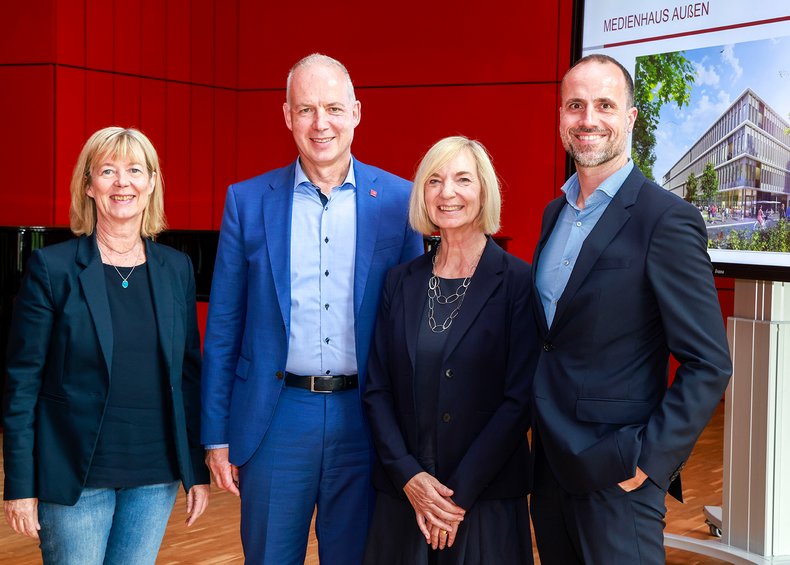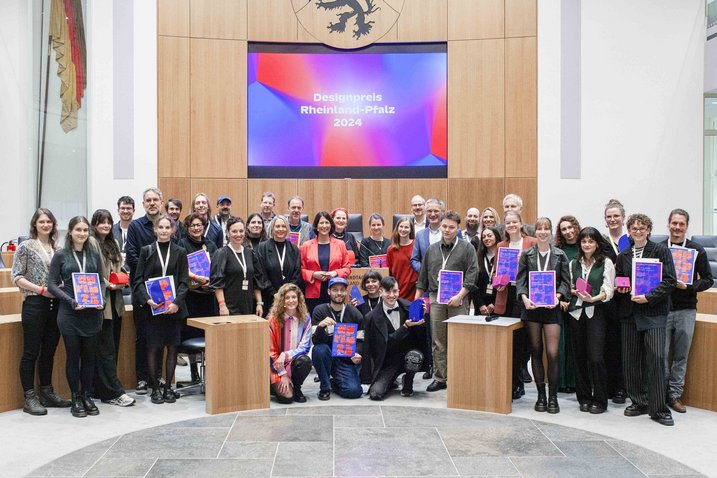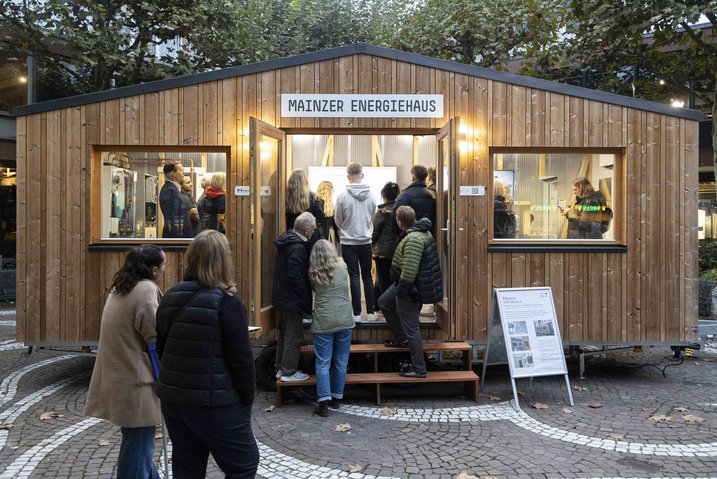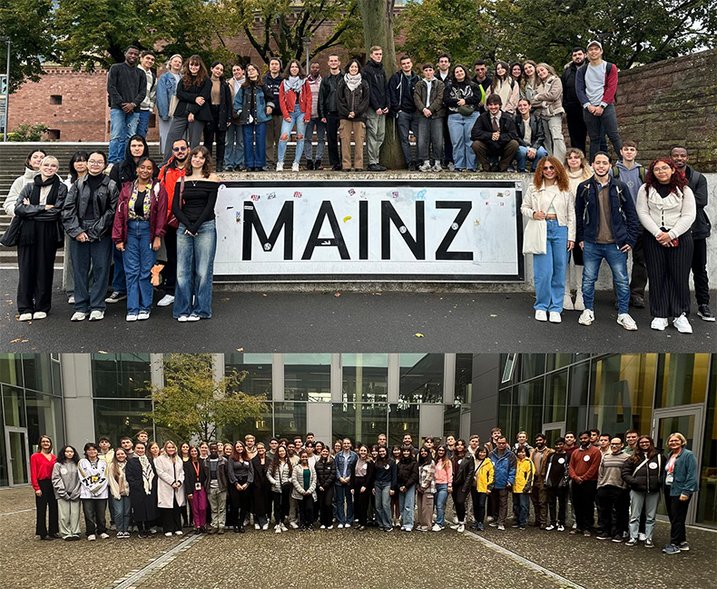Johannes Gutenberg University Mainz (JGU) and Mainz University of Applied Sciences are getting a media center. The new building is planned for construction on the JGU campus. Both universities intend to further expand their existing collaborations and to leverage additional synergies in the new Media Center. The new building is designed as an interdisciplinary research, collaboration, and meeting center that will house high-tech facilities including a digital television studio, editing suites, a radio studio, a multimedia chamber, and a virtual studio. Total construction costs are currently expected to be close to 121 million Euro. The costs are planned for inclusion in the preparation process for the upcoming 2025/2026 budget. Provided that the budget legislature ultimately gives its approval, a possible start of construction is to be expected in 2025.
“The future Media Center on campus will be a center of media professionals and for media professionals, a unique collaboration between research and real-world applications, between old and new media, between students and media professionals. The potential of the new Media Center lies not only in the technological synergy effects resulting from the joint use of the state-of-the-art equipment, but also in the intensive cooperation between the media disciplines located in the new Media Center, which is already reflected in the research focus on media convergence,” said Clemens Hoch, Minister of Science and Health. The new Media Center and its state-of-the-art equipment will not only be open to the media disciplines, they will be available to all lecturers and students as well. The interdisciplinary research, collaboration, and meeting center is visible far beyond the university campus due to its prominent location, underlining its importance and the importance of media studies for the university, Mainz University of Applied Sciences, the city of Mainz, and the state of Rhineland-Palatinate, the Minister continued.
“The plans for the modern four-story, rectangular building are such that in the future the Media Center will form a single unit with the buildings of the Faculty of Social Sciences and the Faculty of Philosophy in terms of urban development and infrastructure. The new cube-shaped building will house a variety of different functions, such as a sophisticated multimedia lecture hall with control room and ancillary rooms, production rooms, studios for audio and video recordings, and editing and viewing suites,” said Doris Ahnen, Minister of Finance and Construction. Key elements of sustainable and climate-friendly construction have also been implemented in the design, she noted. “An exterior façade made of prefabricated wood elements, a large-scale photovoltaic system on the roof and a building standard based on the Passive House standard are planned. In addition, when it comes to designing the grounds, we intend to transform part of Anselm Franz von Bentzel Weg into a new area with areas for recreation and sports, in a climate-friendly fashion with lots of greenery and little pavement. This will contribute significantly to upgrading the entire campus,” continued the Minister.
“We very much welcome the state government’s investment in a joint Media Center, as this measure further supports collaborations in media studies within JGU and with Mainz University of Applied Sciences, and Gutenberg’s already distinctive media profile in doing so, and ultimately contributes to the further development of the entire Gutenberg Campus,” explains the President of Johannes Gutenberg University Mainz, Prof. Dr. Georg Krausch. “Media studies are a traditional focus of research and teaching at our university, which relies on a proven network with partners in the surrounding media establishments. By bringing together our media disciplines in a central campus location and in the immediate vicinity of the Philosophicum and the Social Sciences in the Georg Forster Building, we are creating additional synergies and considerable added value for contemporary teaching and interdisciplinary research.”
In the area of media, Johannes Gutenberg University Mainz is characterized by a virtually unique profile and potential in Germany and is particularly well positioned in the media disciplines. Students at Johannes Gutenberg University have the opportunity to explore empirical-quantitative methods and qualitative-hermeneutic methods during their studies, and to combine them creatively. From the oldest medium–theater–to books, movies, film, television, radio and radio plays, to the traditional forms of print journalism as well as internet communication, Johannes Gutenberg University offers a unique range of media topics in teaching and research.
Prof. Dr. Susanne Weissman, President of Mainz University of Applied Sciences, had the following to say about the future Media Center: “Interdisciplinary work prepares us for the future–in research, teaching, and practical applications. In the future, joint projects can be raised to a higher level in the new Media Center with its state-of-the-art media technology, increasing their reach and impact even more. Thanks to its function-oriented and sustainable utilization concept, the new Media Center not only enables modern teaching and learning environments, it also makes project-oriented forms of teaching under ‘genuine’ production conditions possible. This makes the respective disciplines substantially more interesting for business partners and third-party funding providers. As a production facility for high-quality media productions, a joint building offers a space for sharing experiences in teaching and research, as well as the ideal conditions for becoming a place where specialists are forged for broadcasting and media production houses. With a modern Media Center, Mainz will become even more attractive as a location in times of increased competition for students.”
Within Mainz University of Applied Sciences, the media degree programs are concentrated in the School of Design, which is divided into three coherent disciplines, the teaching units of Communication Design, Media Design, and Interior Architecture. The individual teaching units each offer bachelor’s and master’s degree programs that are interlinked with one another through interdisciplinary modules. The School of Design has won numerous national and international awards, and is one of the largest schools in its field in Germany.
Background
Plans for the Media Center date back to 2009. A concept at the time proposed bringing together the various media technology institutes of Johannes Gutenberg University and Mainz University of Applied Sciences under one roof. Due to the particular significance of media in the city of Mainz and the surrounding region, there is great potential to be leveraged here.
Initially, the old student dormitory Inter 1 was announced as the new building. Over the years, the renovation plans for Inter 1 were abandoned and various alternative locations were evaluated as part of the planning process. In 2018, three plots of land were finally identified for the construction of the Media Center in a series of workshops, which then led to the selection of the present location.




